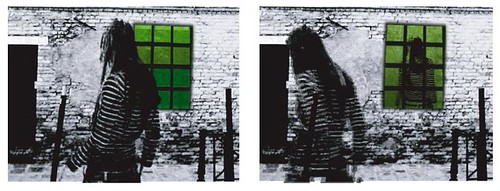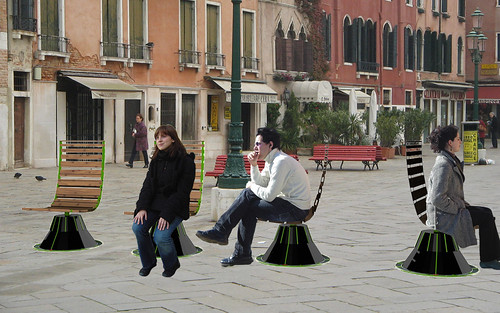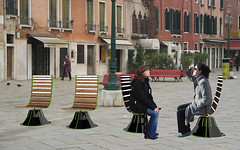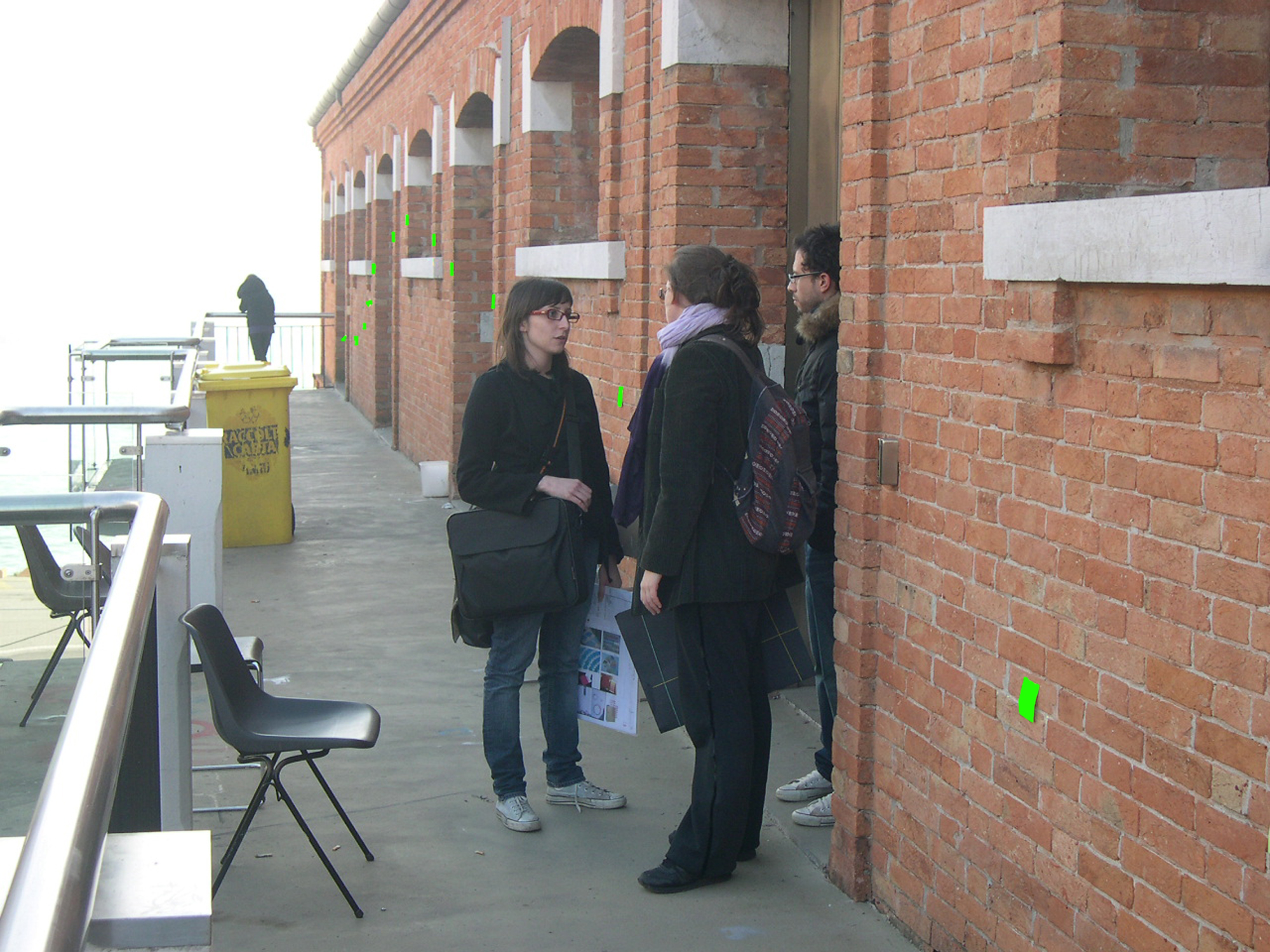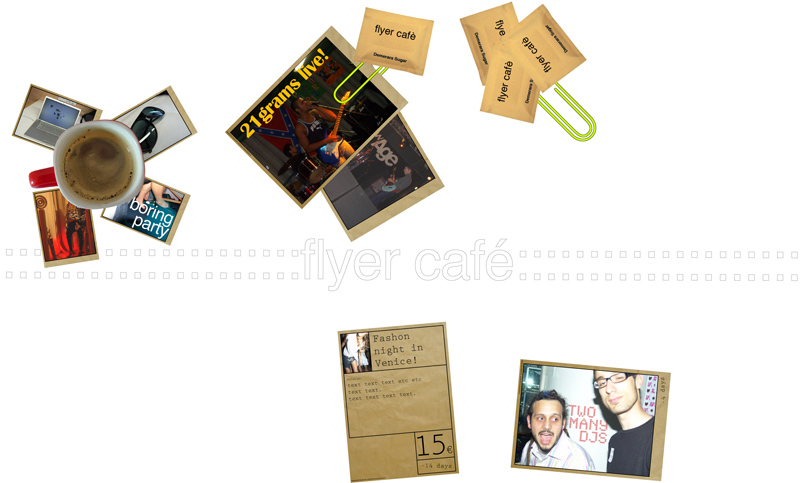
Flyer Café
by Davide Cocchi and Luca De Rosso
Aims
The system projects ‘flyer’ advertisements on a bar counter and allows customers to browse them and print them. It aims to combine, in an engaging and interactive way, the unregulated liveliness which characterizes fly-posted advertisements in city streets, with the congenial habits and gestures of Italian bar life. The site is Il Muro bar in the Rialto area of Venice.
Experience
The system has two types of user: the advertiser, and the customer (the reader of the flyer).
Advertisers can compose, on their computers or mobile phones, simple postcard-like flyers. These can be transmitted, either in or near the bar premises, to the bar’s Flyer Café system by Bluetooth,. Each flyer can be given a broad category: concerts, apartments for rent, etc.
The emotional tone of this transaction is efficient simplicity.
Customers’ experience is similar to that of a normal visit to a bar. Assuming that they know what they seek, they say for example to the barista, ‘Hi!, Give me a tea with lemon in a ‘concerts’ cup’. When the cup is placed on the bar counter, images of all flyers in this category appear, like floating postcards, on the counter and begin to approach the cup.
Customers can drag and read all the flyers. To enlarge one, they rotate a cup on it. To print one, they place onto its image an apparently standard paper-napkin dispenser; a concealed printer in the dispenser disgorges a napkin printer with the flyer’s image.
The emotional tone is informal and playful. The flyers are intentionally not presented in an orderly way. Instead, customers must drag them and ward them off to find what they seek. They learn to use the system by experimenting with its behaviour, not from a manual.
This project concentrates on the customers’ experience.
Implementation
For the advertiser, the input devices are Bluetooth-enabled mobile phones, laptops, PDAs, etc.
For the customer, the inputs are the cup type (for the category) and rotation, and the position of their hands, the cup and the dispenser; this information is detected and interpreted by an image-recognition system installed under the counter. The output devices are the counter (an active luminescent screen or a translucent surface for back projection), and the napkin dispenser. Inputs and outputs are mediated by software on a computer.
For the ‘real life’ version, the image-recognition system must be able to distinguish: 1) cup positions, categories (by colour or pattern) and rotation, 2) finger positions, and 3) dispenser positions. Active luminescent screens might also avoid the heat build-up and maintenance problems of projection.
For our prototype version, image recognition only distinguishes the position of pattern-marked cups and fingers; we have modified ready-made reacTIVIsion recognition software, and hope to use a higher-resolution camera than we have at present. Images are projected upwards onto a translucent counter. And the dispensers have no printer. But we hope to demonstrate communication between a phone and the projection system.
Unresolved issues
1) Animation of flyer images.
2) Possible sophistication of image recognition, and the need to pattern-mark fingers for the prototype.
3) Software and input devices for inputting flyer images from the advertisers.
>> video
 As Venice is an island linked to the high and low tide mechanism of the Lagoon, TSF allows the users to see in an easy and intuitive way where and when the water is going to raise up/down, to easily plan their movements in the city.
As Venice is an island linked to the high and low tide mechanism of the Lagoon, TSF allows the users to see in an easy and intuitive way where and when the water is going to raise up/down, to easily plan their movements in the city.